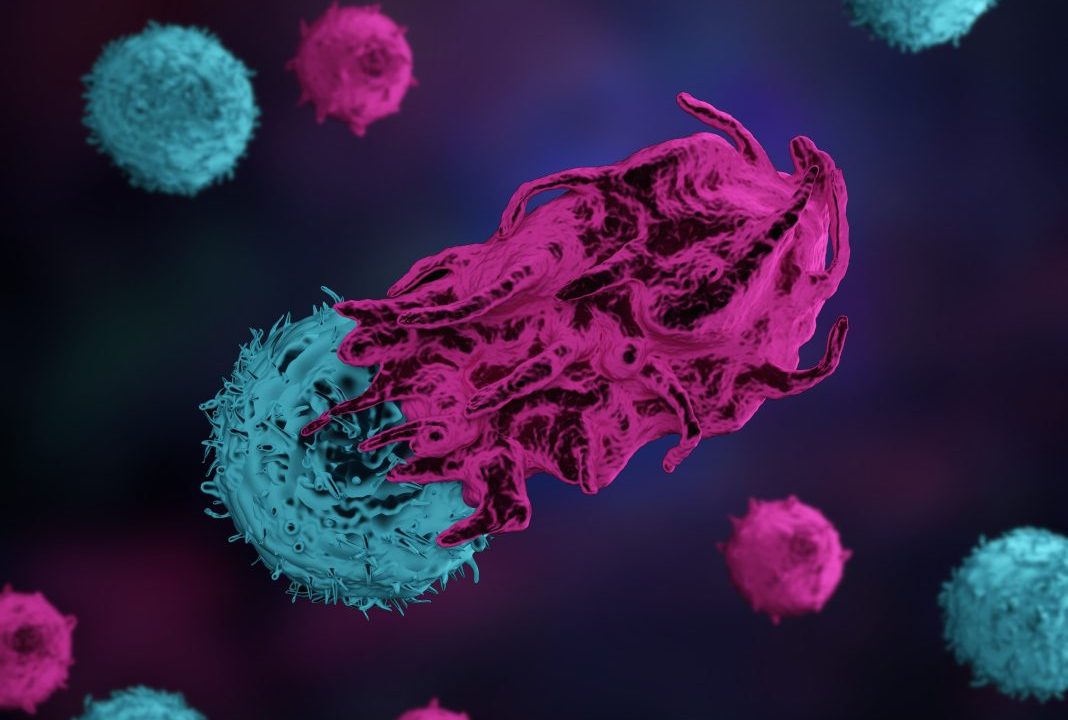During a battle with cancer, T cells can become exhausted and are no longer able to function properly. The early phase of exhaustion can sometimes be reversed using immunotherapy drugs, but it has been believed that once T cells become too exhausted, this state becomes irreversible. The results of studies by University of Pittsburgh and UPMC researchers now suggest that even the most fatigued T cells can be revived.
The team profiled molecular features of T cells as they progressed from early to terminal exhaustion in a mouse model of melanoma. Unexpectedly their results indicated that even the most terminally exhausted T cells retain some capacity to be functional again, and also identified approaches to overcome exhaustion, opening potential new avenues for cancer immunotherapy.
“People think about terminally exhausted T cells as a lost cause, that there’s no coming back from this state,” said Amanda Poholek, PhD, assistant professor of pediatrics and immunology at Pitt’s School of Medicine, and director of the Health Sciences Sequencing Core at UPMC Children’s Hospital of Pittsburgh. “But given the right circumstances—the T cell version of rest—we show that they can come back. This finding could have incredible potential for immunotherapy.” Poholek is co-senior author of the researchers’ published paper in Science Immunology, which is titled, “Tumor microenvironmental signals reshape chromatin landscapes to limit the functional potential of exhausted T cells.”
Over time, tumor-fighting T cells may enter the early phase of exhaustion, a progenitor-like cell, which eventually differentiates into poorly functional, terminally exhausted cells. “For both chronic infection and cancer, differentiation to exhaustion is progressive, defined by at least two transcriptionally and functionally distinct states: one progenitor or stem-like and another terminally differentiated,” the team noted.

However, they noted, that the mechanisms that promote progression to terminal exhaustion in tumors are not well understood. “Immunotherapies are limited by inadequate understanding of the transition from progenitor T cells to terminal exhaustion. How tumor microenvironments affect this progression at the epigenetic level is not known, and whether terminally exhausted T cells have therapeutic potential to gain effector capacity is unclear.”
“To bring the promise of immunotherapy to more cancer patients, we need to uncover more about why T cells fail,” said co-senior author Greg Delgoffe, PhD, associate professor of immunology at Pitt and director of the Tumor Microenvironment Center at UPMC Hillman Cancer Center.
With this goal, Poholek, Delgoffe, and collaborators deeply analyzed both early and terminally exhausted T cells in mice with an aggressive form of melanoma. They profiled the cells’ epigenome—the inheritable molecular marks that attach to DNA and control gene expression. “We expected to find exhausted T cells with epigenomes damaged beyond repair, that they were goners,” said Poholek. “So, we were really surprised to find that these cells had the potential for recovery.”

To become fully activated, T cells have two switches: the T cell receptor and a co-stimulatory signal. The researchers found that terminally exhausted T cells had insufficient co-stimulation. When they used an antibody that binds to a co-stimulatory receptor called 4-1BB, gene expression increased, enhancing T cell activity.
Another key finding was that low oxygen, or hypoxia, which is common in the tumor microenvironment, contributed to impaired gene expression in terminally exhausted T cells. When the researchers reprogrammed T cells to be resistant to hypoxia, they differentiated into a more functional state.
“Exhausted T cells have what it takes to be functional, but the tumor environment is set up for them to fail,” explained Delgoffe. As the authors further noted, “Our data highlight the convergence of both altered immunologic signals and pathologic environmental signals that redirect differentiation to exhaustion and suggest that exhausted T cells remain in their dysfunctional state due to the “memory” of these previous stressors.” Delgoffe continued, “By restoring oxygen or improving co-stimulation, we can realize the full potential of these cells and potentially gain the benefits of a functioning, healthy immune system.”
Possible new approaches to target terminally exhausted T cells for immunotherapy could include drugs that target hypoxia or co-stimulation pathways or engineering exhaustion-resistant CAR-T cells, say the researchers. In their paper they concluded, “… our data collectively reveal a primed chromatin state in terminally exhausted T cells that may be available for reinvigoration given the right therapeutic inputs, and our study may be of use for developing combination therapies that take full advantage of all subsets of tumor-infiltrating T cells to eradicate cancer cells.”






